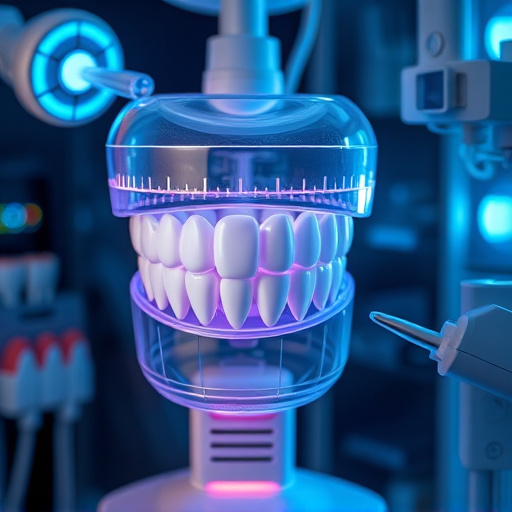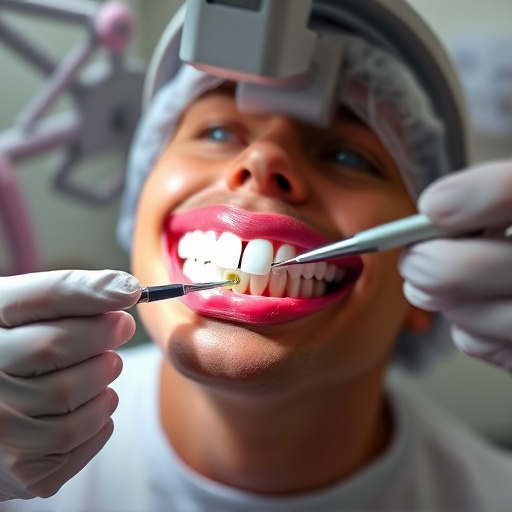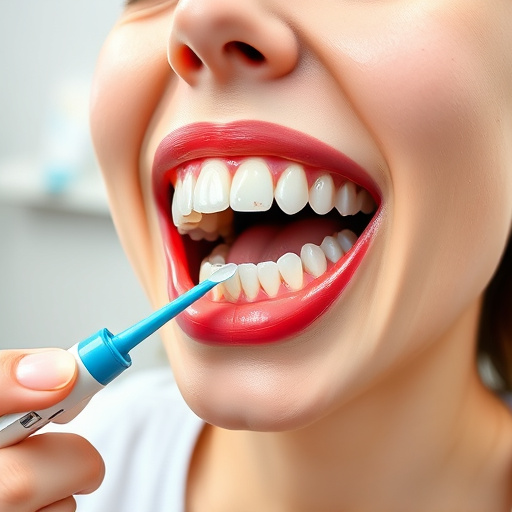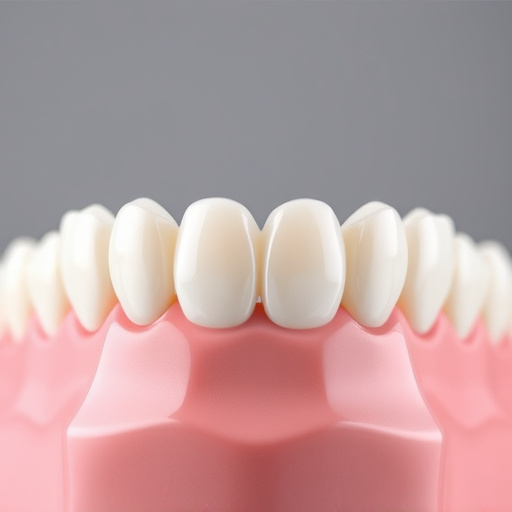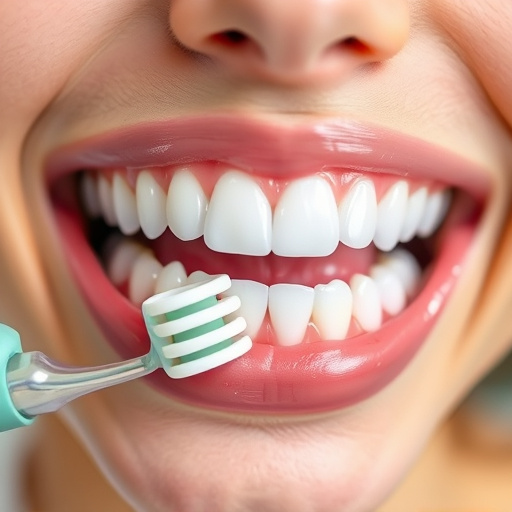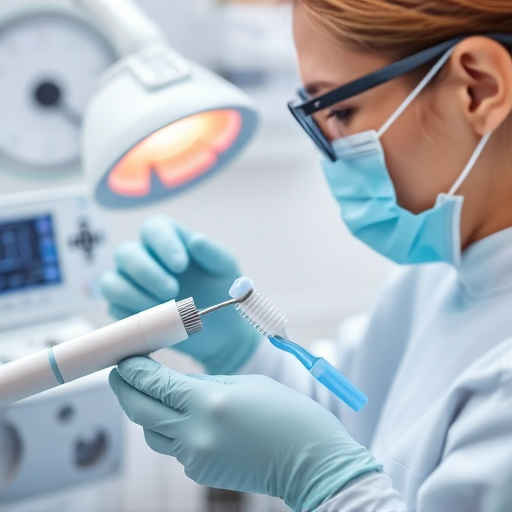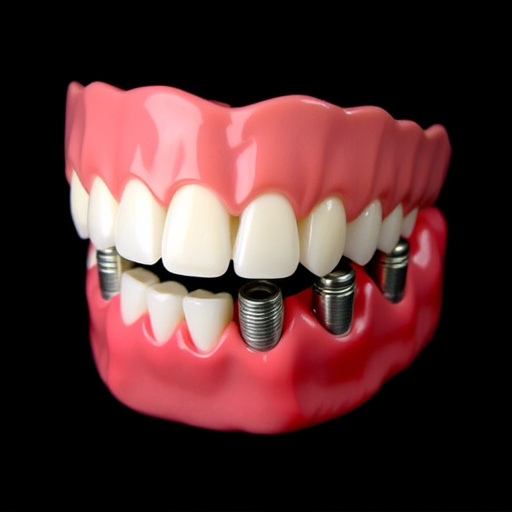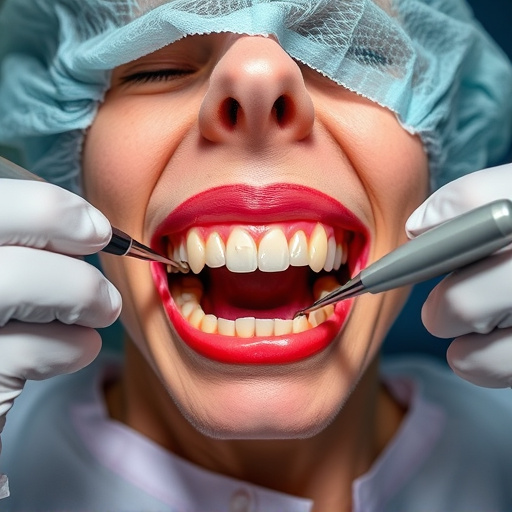Gum disease, caused by bacterial plaque buildup, leads to inflammation and potential tooth loss. Early signs include bleeding gums and bad breath. Modern dentistry treats gum disease with targeted approaches, understanding the complex oral microbiome. This includes advanced materials with antimicrobial properties, tailored treatments, and cosmetic procedures. Effective long-term gum disease treatment requires rigorous oral hygiene, regular dental check-ups, and ongoing maintenance for optimal oral health.
Gum disease, a silent yet serious oral health issue, affects millions. It’s caused by bacterial infections in the gums, leading to inflammation and potential tissue loss. This article explores effective gum disease treatment methods that target these harmful bacteria head-on. We delve into understanding the causes and symptoms, highlighting innovative treatments revolutionizing dental care. Additionally, we provide post-treatment care tips for maintaining optimal gum health long-term. Discover how these strategies offer a comprehensive approach to tackling gum disease effectively.
- Understanding Gum Disease: Causes and Common Symptoms
- Innovative Treatment Approaches: Targeting Bacteria for Effective Gum Health
- Post-Treatment Care and Maintenance: Ensuring Long-Lasting Results
Understanding Gum Disease: Causes and Common Symptoms

Gum disease is a common oral health issue that affects millions worldwide. It’s caused by bacteria buildup along the gum line, leading to inflammation and potential tissue damage over time. Poor oral hygiene, inadequate brushing and flossing, and certain lifestyle factors contribute to its development. Early signs include bleeding gums during brushing or flossing, red, swollen, or tender gums, and bad breath persisting despite proper dental care. Neglected gum disease can advance to periodontitis, affecting not just the gums but also the bones that support teeth, potentially leading to tooth loss.
Understanding the causes is crucial for effective gum disease treatment. Poor oral hygiene allows bacteria to form plaque and tartar buildup, which stimulates an immune response from the gums. This inflammation can weaken gum tissues and create spaces known as pockets, where bacteria thrive. General dentistry procedures such as dental cleanings and thorough examinations play a vital role in early detection and managing gum disease before it progresses. In severe cases, tooth extractions might be necessary for infected teeth, along with scaling and root planing to remove plaque and tartar beneath the gum line.
Innovative Treatment Approaches: Targeting Bacteria for Effective Gum Health

In the quest for effective gum disease treatment, innovative approaches are revolutionizing oral care. Traditional methods often focus on scaling and root planing to remove plaque buildup, but these techniques alone may not address the root cause—bacterial infection. Modern dentistry is now shifting its attention to targeting specific bacteria known to contribute to periodontitis, the advanced form of gum disease. By employing cutting-edge technologies and understanding the complex microbial ecosystem within the mouth, dental professionals can develop tailored treatments.
One such approach involves the strategic use of antimicrobial agents and advanced materials. For instance, dental crowns and dental implants can be designed with antibacterial properties to create a biofriendly environment. Additionally, cosmetic dentistry procedures can go beyond aesthetics; they can incorporate techniques that promote oral health by minimizing bacterial presence. These innovative strategies not only enhance gum health but also contribute to the overall well-being of patients, ensuring a brighter, healthier smile.
Post-Treatment Care and Maintenance: Ensuring Long-Lasting Results

After undergoing effective gum disease treatment, proper post-care and maintenance are essential to ensure long-lasting results. This includes maintaining a rigorous oral hygiene routine at home by brushing twice daily with fluoride toothpaste and flossing once per day. Regular dental check-ups and professional cleanings every 3–6 months are crucial to monitor the health of your gums and teeth, remove any lingering plaque or tartar, and address potential issues early on.
Additionally, specific treatments like dental bonding can be recommended for minor defects or gaps left by gum disease, enhancing both aesthetics and functionality. In more severe cases, dental implants offer a permanent solution, replacing missing teeth and promoting overall oral health. Remember that consistent care and timely interventions are key to preventing future gum disease episodes and maintaining optimal oral health.
In light of the above, it’s clear that effective gum disease treatment revolves around targeting bacteria. By understanding the causes and common symptoms, embracing innovative approaches like antimicrobial therapies, and committing to post-treatment care, individuals can achieve and maintain optimal gum health. Remember that proactive management is key to preventing recurrences, ensuring a brighter, healthier smile for years to come. This holistic approach to gum disease treatment empowers folks to take control of their oral health and embrace a life free from gum-related discomfort and complications.



